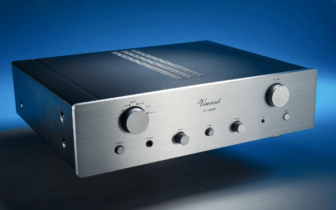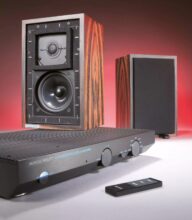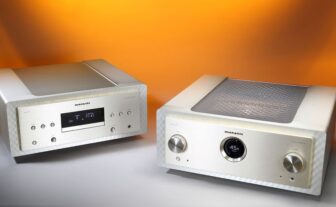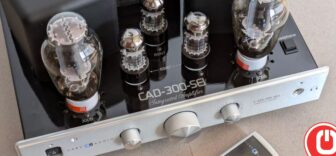Fezz Lybra 300B Evo Review
You don’t see single-ended amps with parallel-connected 300Bs every day. The reason: This concept is quite challenging in terms of circuitry. And Fezz Audio even realized it with toroidal output transformers!
By Roland Kraft
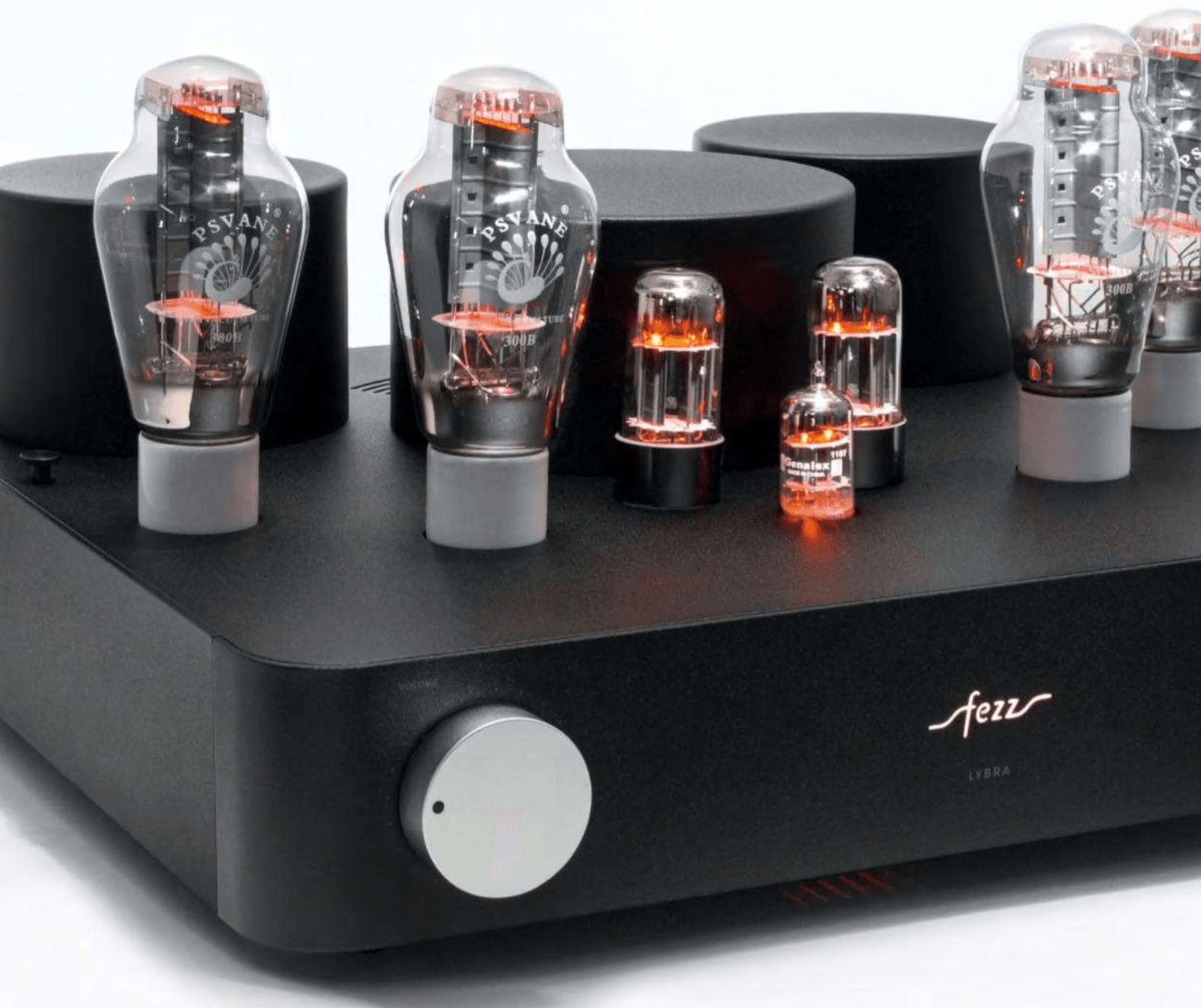
Let’s not kid ourselves: When it comes to the cult triode 300B, there’s a lot of exaggeration going on. One promoter credits the famous output tube in single-ended operation with 12 watts, another settles for ten. Both conceal that this is music power at 10 percent distortion and that such amps might push a tube—which today in Western Electric’s new production is priced at around $1,575 per pair—to the brink of its maximum ratings. Even the oft-repeated 8 watts aren’t really accurate; considering sinusoidal power measurements, without negative feedback it’s rather a modest 5 watts at 3 percent distortion.
So, the trees don’t grow to the sky. What works wonderfully with a 96 dB full-range speaker with a light paper cone quickly goes into zero-dynamics mode with a modern two-way compact box—in other words, everything sounds equally loud. Or rather, equally quiet. And that, of course, also applies to the numerous Chinese or Russian replicas of the former Western Electric tube icon. Replicas that are now anything but bad and even absolutely affordable in a matched quartet (“tube quartet”).
In the past, there were many significantly more powerful large triodes, but these tubes can no longer be considered for hi-fi amplifiers due to safety considerations regarding their circuitry environment. In the medium (triode) power class, we find amplifiers on the market with hefty tubes like the 211 or 845 types—tubes with significantly more power than the 300B, but unfortunately not with its linearity.
In terms of characteristic curves, the old US triode is indeed a dream for low-frequency amplifiers, if it weren’t for the low power. A possible solution to the problem is push-pull operation. Or, if you want to maintain the single-ended sound without crossover distortion, parallel single-ended operation. The result: double the power, half the internal resistance. The disadvantage: You’re essentially creating a new, different output tube that operates under completely different conditions. Additionally, the matter is tricky: Simply paralleling anodes, grids, and cathodes (for the directly heated 300B, that’s the heater) isn’t enough, because aging effects and unavoidable differences between both tubes can cause things to go completely out of control. More on that shortly.
After this admittedly long introduction, let’s turn to our test candidate, which is precisely such a parallel single-ended amp with the 300B: the Lybra 300B EVO integrated amplifier from Fezz Audio in Poland. Originally a transformer specialist, particularly for toroidal transformers, the Polish manufacturer has since transformed into a recognized tube amplifier specialist that naturally builds and uses toroidal output transformers. As many tube fans know, this is a hotly debated topic in itself, as designers’ opinions on toroidal output transformers range from “no-go” to love letters in the form of entire books. It’s also a matter of belief, and we won’t get involved, but we’re happy to point out that, at least in the case of the Fezz Lybra EVO, we have neither technical nor sonic reservations.
In the Lybra, a total of three encapsulated transformers, a large ensemble of tubes, and meticulously crafted electronics on a huge circuit board add up to a hefty 23-kilogram unit with a width of 42 centimeters. On the chassis, under a supplied cover, there are two 300Bs per channel, supplied by Psvane. A double triode of the type 6SN7 serves as a powerful driver, and the input voltage amplifier is a 12AX7.
The integrated amplifier offers three standard high-level inputs and optionally a Bluetooth input (aptX), as well as a remote control as standard. The main switch is on the back, where it doesn’t really belong, and the input selector is a large rotary knob on the right front. A super-solid chassis, decent sockets and terminals, and flawlessly low noise round off this lavish triode menu, for which, apparently as a matter of company policy, there are no deeper technical details. The Fezz 300B Lybra EVO is specified at 2 x 15 watts, which is accurate depending on measurement criteria. This makes the selection of suitable speakers much easier than with a single 300B, although here too the rule applies: Efficiency is everything, and it’s better to avoid nasty impedance dips, and trial makes perfect.
To clarify a bit where the problems with parallel single-ended amplifiers lie, a brief excursion into circuit technology: You are on the safe side if you use separate cathode resistors, split again at the heater, and separate grid resistors (grid stoppers). Even using two coupling capacitors after the driver is sensible. Although we don’t know how Fezz Audio does it (under the keyword “Auto Bias,” there are completely different ideas about quiescent current setting), experienced designers prefer A1 operation with separately adjustable negative grid bias over pure “automatic” A operation via corresponding cathode resistors. Due to the low amplification factor of the output triodes, the input stage and driver play an even larger role sonically; the parallel-connected output triodes with their high grid-anode capacitances require a powerful, low-impedance driver with plenty of signal amplitude. A 6SN7 with separately connected triode systems operating as cathode followers is often used. This places the voltage amplification entirely at the input, meaning the amp, depending on the tube, doesn’t have too much input sensitivity, which we also observe with the Fezz. But as mentioned, there is no precise information about this.
And how does it sound?
Very, very impressive. Someone who knows their craft was at work here. The amp runs cleanly, is extremely low-noise, and seems subjectively much more powerful than it looks on paper. With surprising bass control (naturally not the ultimate punch, but believable and growling) and a successful balancing act between a fresh breeze and the absence of any harshness, it builds up a huge virtual space with enormous depth. If you will, this is the crowning glory of this amplifier, which sets up its soundstage with an almost physically present portrayal and delights with an intense, warm, emotionally charged performance. That certain “something” attributed to the 300B is there, complemented by sparkling playfulness and enormous transparency. Listening pleasure is thus guaranteed.
CONCLUSION:
With such an amplifier, the speaker ultimately determines the achievable dynamics. Leaving power-hungry models aside is half the battle. We used a Mission 770—not the pinnacle of efficiency here, but a high-impedance delight. So: It works, even excellently. Compliments to Fezz for this project.
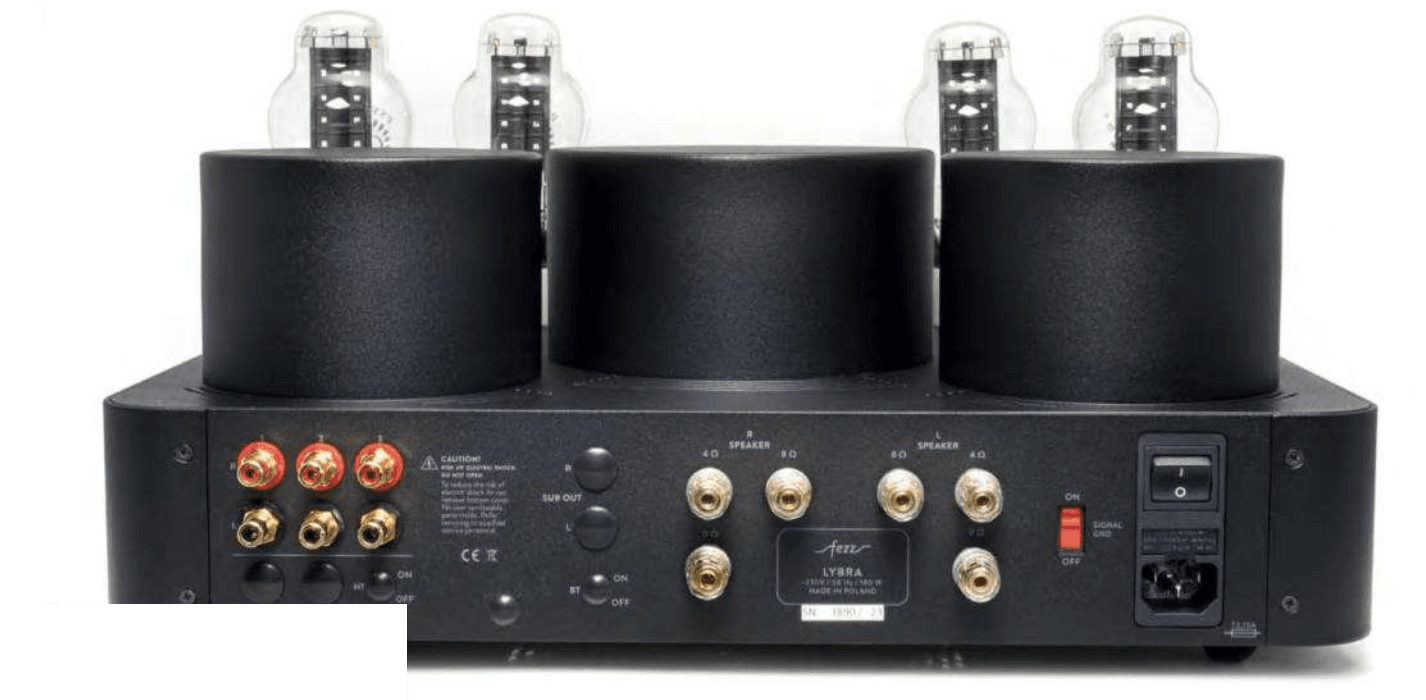
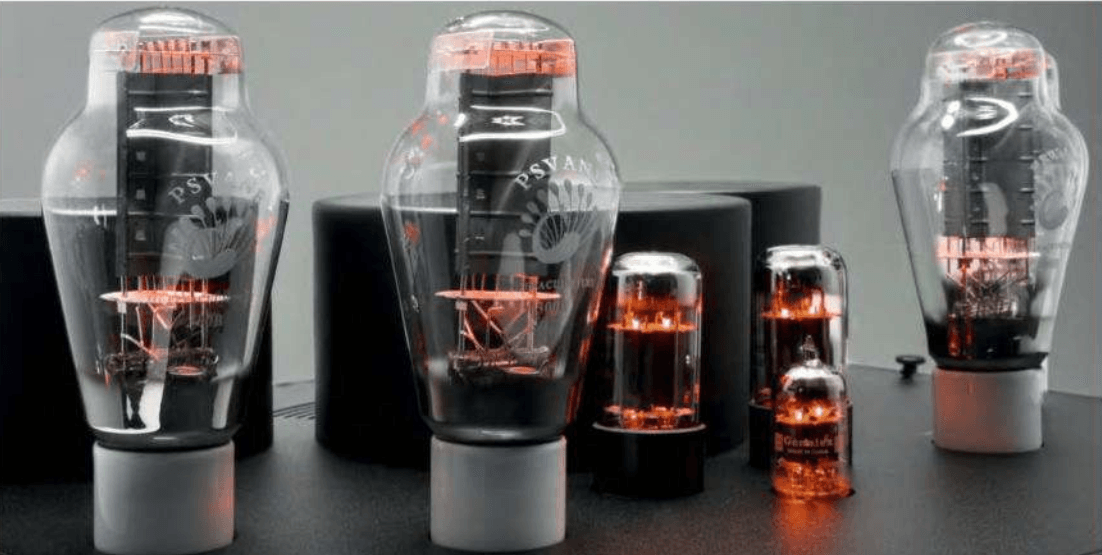
TUBE CONFIGURATION
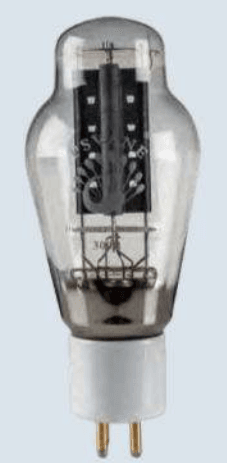
300B: The output tube is supplied by Psvane from Chinese production and is universally accepted as a good 300B replica. In tube trade, around $210 for two pieces.
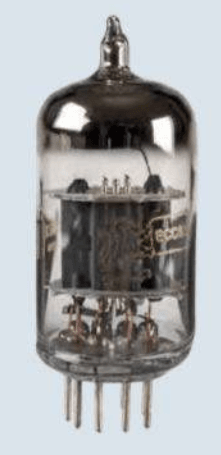
12AX7: The double triode, firmly established in tube technology, is available in numerous currently manufactured variants. In tube trade for $31 to $53.
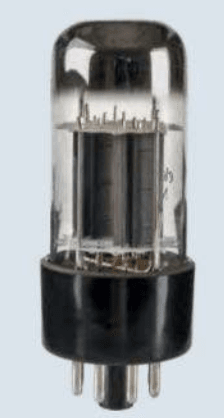
6SN7: The octal double triode is available in numerous variants at prices between $21 and over $105 each. So replacement is no problem, and sound experiments are also possible.
TECHNICAL DATA
General Information
- Website: vertrieb.audium.com
- List Price: €4950 (approx. $5300)
- Warranty: 6 months
- Dimensions (W × H × D): 42 × 18 × 41 cm
- Weight: 23.5 kg
Connections
- Phono MM/MC: No
- High-Level Cinch/XLR: 3 / No
- Digital Input (Optical, Coaxial, USB): No / No / No
- Tape Out: No
- Pre-Out Cinch/XLR: No / No
- Headphone Output: No
Functions
- Remote Control: Yes
- Tone Controls / Switchable: No
- Loudness Function: No
- Special Features:
- Parallel Single-Ended 300B
- Speaker Terminals 4/8 Ω
Pros & Cons
✅ Pros:
✔ Spacious sound, powerful within limits
✔ Optional Bluetooth
✔ Remote controllable
❌ Cons:
✘ Power switch is placed on the back
Ratings (Converted to a 10-Point Scale)
| Category | Original Score | 10-Point Scale |
|---|---|---|
| Sound Quality | 189 | 10.0 |
| Features | Good | 8.5 |
| Usability | Satisfactory | 7.0 |
| Build Quality | Very Good | 9.0 |
Audio Benchmark
- Overall Rating: 189 Points (≈ 10/10)
- Price/Performance: High-End

Fezz Lybra 300B Evo
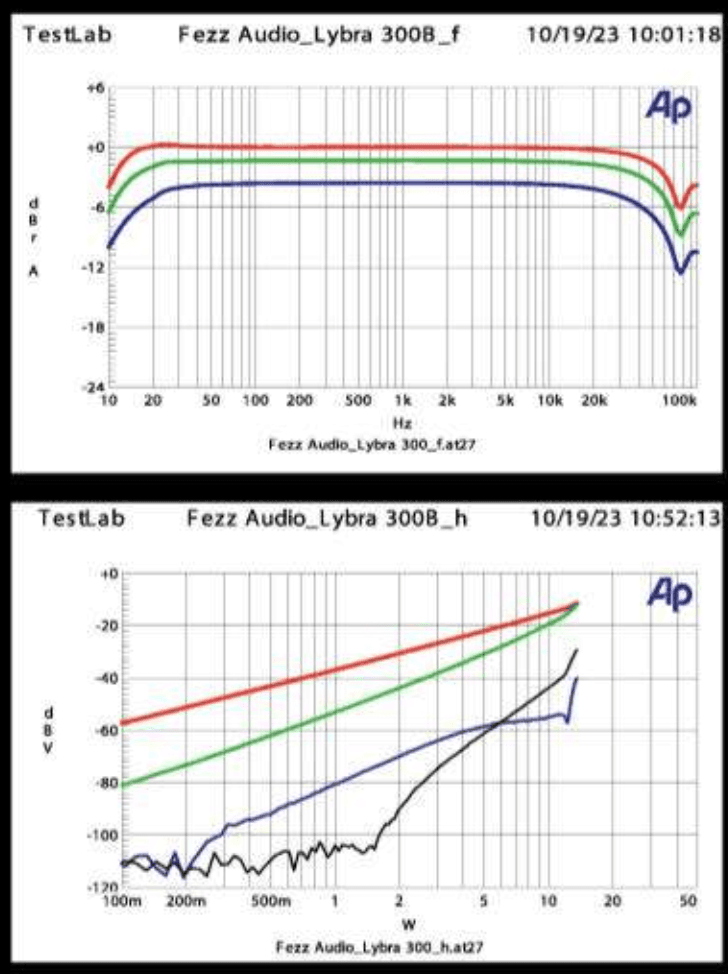
In the audible range, largely linear but load-dependent frequency response: At the 4 Ω tap, there is a drop of 3.5 dB between 8 Ω and 2 Ω load (red/blue); damping factor 5 (referenced to 8 Ω at 1 kHz).
Harmonic distortion k2 to k5, 1 kHz at 4 Ω (below): high first and second harmonic content (red, green) – 0.6% distortion at 1 W, 3% distortion at 10 W. Very good signal-to-noise ratio of 104 dB (A-weighted, 10 V). Slight mains hum on the left channel, THD+N 0.28%, right 0.08% (unweighted, 2 V). Power at 4 Ω terminal: Sine wave, 8 Ω: 13/11 W; 4 Ω: 9/13 W (each L and R at 3% distortion). Complex music power at 8/6/4/3/2 Ω load: 15/16/17/15/12 W. Power consumption 243 W (load-independent).
AUDIO Rating: 7 out of 10
INTERVIEW Michael Kaim, BTB owner and CEO

For over 20 years, Michael Kaim has been steering the fortunes of BTB Elektronik, probably the largest tube distributor in the world. Kaim has one million tubes in stock, including all common models, but also exotic ones like subminiature tubes, Geiger-Müller counter tubes, or even liquid-cooled 500KW triodes.
The relations with Russia and China are tense; what should you consider when buying tubes?
Kaim: Basically, you have to assume that the situation was significantly worse two years ago. Today, we have difficulties importing Russian tubes. Russian tubes have the problem that the Russians cannot deliver directly from Russia. It goes through detours today—mostly via Armenia or Kazakhstan, but also partially via Turkey and Serbia. So it goes through two or three intermediaries, which makes it more expensive. Another problem with Russian tubes is payment, because due to the loss of SWIFT, direct payment is not possible. So this also goes through foreign banks. Again, middlemen are involved who want their commissions. The payment transactions, therefore, cost more money nowadays. But: We have 90 percent of the demanded Russian tubes back in stock. There are still shortages with some power tubes, such as KT88, KT120, KT150, and partly KT170, because the Russians are currently prioritizing certain materials for war equipment. As for China: Here, imports are working relatively normally again, but the Chinese factories still have problems due to the issues with Russia and still due to COVID-19. This is exacerbated by the closure of the company Shuguang, which hasn’t produced any tubes since 2019. This leads to massive delivery problems. OEM customers had to switch to other Chinese tubes, resulting in longer delivery times. However, these supply bottlenecks are slowly easing again. And Shuguang is also starting production again. I expect that we will see Shuguang tubes on the market again in early to mid-2024.
Which countries are other tube suppliers besides Russia and China?
Kaim: Slovakia—there’s the company JJ Electronic and a few smaller ones. Western Electric in the USA, but they’re currently only making the 300B. Then there’s the company Elrog in Germany, as well as Kron Audio and Emission Labs in the Czech Republic. They mainly deal with power triodes and rectifier tubes in the high-end sector and are thus the niche within the niche.
Are there quality differences?
Kaim: Before 2020, the quality of the tubes was better than today because production is so tightened everywhere now. But this is also easing at the moment because the market is declining. People are going on vacation again and spending less money on the hobby. As a result, the quality of the tubes is increasing again. In addition, there are quality differences between the tubes. You can expect better quality from high-priced tubes. And even the Chinese tubes, which had a lot of rejects a few years ago, are now competitive.
In the past, tubes were indispensable for amplifying voltages and currents due to the lack of semiconductors, while today electron tubes are used more in special applications. Is there a concern that manufacturing quality will deteriorate due to disappearing know-how?
Kaim: I don’t see it that way. Tubes are dispensable today, but customers have certain desires. Basically, the manufacturing quality of tube amplifiers from China, for example, has also increased. They meet the quality standards we set in the West. Today, in many cases, they would pass a VDE and an EMC test or get a CE mark. Maybe not yet in terms of fire protection, but in terms of safety distances and insulation requirements. But, it has to be said: Basically, tubes are a niche topic today. However, the market for tube amplifiers is stable.
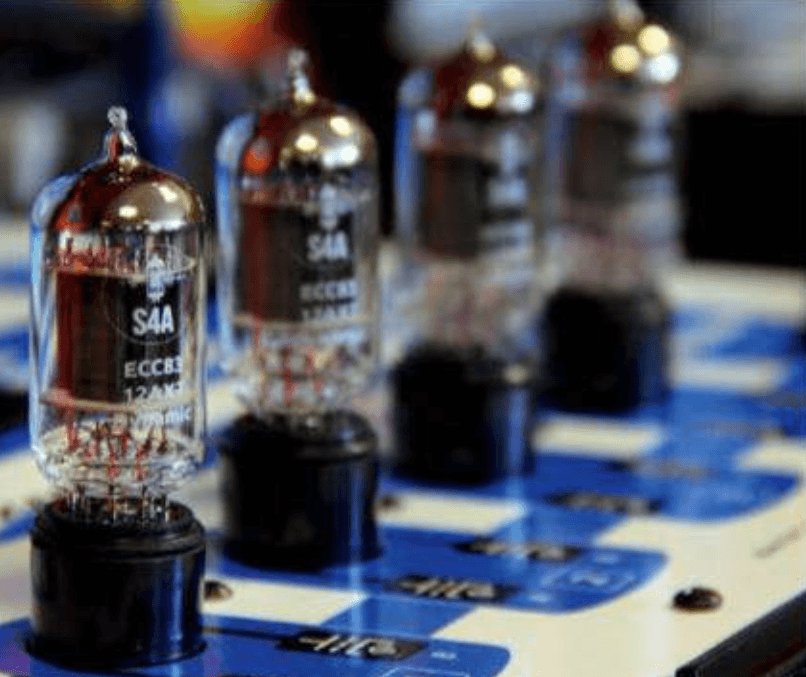
Unboxing Fezz Audio's Lybra 300B and Titania Integrated Amplifiers!
In this video @commandperformanceav owner Jeff Fox unboxes and gives us his initial impressions of the Fezz Audio Lybra 300B ...



